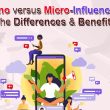ChatGPT is a cutting-edge language model created by OpenAI that is aimed to generate human-like responses to user inputs. It is a member of the Transformers family of models, which are capable of reading and creating natural language text. ChatGPT is an abbreviation for Generative Pre-trained Transformer, which means it has been trained on enormous volumes of text data to discover linguistic patterns and correlations.
ChatGPT’s capacity to generate text that is fluent, coherent, and contextually relevant is one of its important strengths. It can answer queries, complete sentences, and even converse with people in free-form. This is because to its vast size and the massive volumes of data on which it has been trained.
ChatGPT is now one of the most extensive language models on the market. ChatGPT processes user input by breaking it down into a sequence of tokens, which are then processed by its deep neural network. To discover the relationships between these tokens, the model employs a technique known as self-attention, which allows it to comprehend the context and meaning of the input. ChatGPT creates a response after processing the input by predicting the most likely sequence of tokens depending on the context.
ChatGPT’s possible uses span from customer care chatbots to language translation systems. It can also produce creative writing, poetry, and even news pieces.
It has the potential to change the way we communicate with computers by allowing humans to connect with technologies in a more natural and intuitive manner. We should expect to see even more fascinating uses in the future as researchers continue to enhance and expand language models like ChatGPT.
What is GPT in Chat GPT
GPT stands for “Generative Pre-trained Transformer” in ChatGPT. It is a language model that has been pre-trained on massive volumes of text data in order to interpret and generate natural language text. The title “Transformer” alludes to the model’s architecture, which processes input and generates output through a sequence of self-attention layers.
The term “Generative” in GPT refers to the model’s ability to create text. Unlike traditional language models, which are designed to classify or predict text, generative models like GPT can generate original text based on user or other source input. As a result, they can be used for a variety of applications, ranging from chatbots to content production tools.
The “pre-trained” part of GPT refers to the model being trained on a huge corpus of text data before being deployed for specific tasks. This pre-training is a key stage in developing effective language models because it enables the model to understand linguistic patterns and relationships that may be used to generate more accurate and relevant responses.
GPT training entails introducing vast volumes of text input into the model and enabling it to learn from this data using an unsupervised learning approach. The model analyses the text data and detects patterns and links between words and phrases during this process. This knowledge is then used to generate responses to additional inputs, such as user queries.
Pre-training language models, such as GPT, have the advantage of allowing the model to learn a wide range of language tasks without requiring significant amounts of labelled training data. This is due to the fact that the pre-training procedure gives the model with a basic grasp of language, which can then be fine-tuned for specific tasks using smaller amounts of labelled data.
The “Transformer” part of GPT refers to the model’s architecture. Transformers are a sort of neural network that was initially described in a research published in 2017 by Vaswani et al. The Transformer architecture’s key innovation is the use of self-attention layers, which allow the model to focus on different parts of the input sequence as it analyses it.
The input sequence in a standard Transformer-based language model, such as GPT, is broken down into a series of tokens, which are then passed via a succession of self-attention layers. These layers enable the model to understand contextual associations between words and phrases, which is critical for producing accurate and relevant responses.
The output of the self-attention layers is then processed further by a succession of feedforward layers before generating the final response. The process is repeated for each input sequence, allowing the model to respond to a wide range of inquiries.
Who created Chat GPT
OpenAI, a renowned research centre devoted on developing artificial intelligence for the benefit of humanity, produced Chat GPT. Elon Musk, Sam Altman, Greg Brockman, and Ilya Sutskever were among the famous technologists and entrepreneurs who established OpenAI in 2015.
The purpose of OpenAI is to develop safe and helpful artificial intelligence that can aid in the resolution of some of the world’s most urgent issues. Natural language processing is a crucial area of research for OpenAI, which is where Chat GPT comes in.
OpenAI researchers Alec Radford, Jeffrey Wu, Rewon Child, David Luan, Dario Amodei, and Ilya Sutskever lead the creation of Chat GPT. The team started working on the project in 2018, with the goal of developing a language model capable of producing human-like answers to user inputs.
To accomplish this, the researchers trained Chat GPT on a vast corpus of text data, which included web pages, novels, and other written language sources. Unsupervised learning was used to train the model, which entails feeding vast volumes of text data into the model and enabling it to understand patterns and relationships in the language on its own.
To manage the vast quantity of data required, the pre-training phase for Chat GPT took many months and was executed on a massive cluster of GPUs. After training the model, the team fine-tuned it for specific tasks including language translation and question answering.
Team’s effort yielded a language model capable of producing extremely fluent and contextually relevant responses to a wide range of queries. Chat GPT was initially made available to the public in June 2018, and it soon gained popularity due to its outstanding powers.
Is Ghat GPT free to USe Are Chat GPT answers are always correct
Developers and corporations can access Chat GPT via OpenAI’s API, which requires a premium subscription. OpenAI does, however, provide a free plan with limited API access for developers who wish to test the technology before committing to a paying membership.
While Chat GPT is an excellent technology capable of producing highly fluent and contextually relevant responses, it is vital to emphasise that the accuracy of its responses cannot be guaranteed. The model is trained on massive volumes of text data, but it cannot comprehend the meaning of words or the context in which they are used in the same way that a human can.
As a result, Chat GPT may deliver erroneous or misleading responses in some cases. For example, if a user asks a question that necessitates subject expertise that Chat GPT lacks, it may create a wrong answer or a response that is irrelevant to the topic.
Another potential difficulty with Chat GPT is that, depending on the data used to train it, it may generate biassed or offensive responses. This is because the model learns from the language in the data, and if that language contains biases or objectionable content, the model’s replies may reflect those biases.
As a result, there are times where Chat GPT may deliver erroneous or misleading responses. For example, if a user asks a question that requires specialised subject expertise that Chat GPT does not have, it may create an inaccurate answer or a response that is irrelevant to the topic.
Another potential concern with Chat GPT is that it may deliver biassed or offensive responses based on the data it was trained on. This is because the model learns from the language in the data, and if that language contains biases or objectionable content, such biases may be mirrored in the model’s responses.
Also read:- What Marketing Strategies Do Supermarkets Use?
Conclusion
OpenAI’s Chat GPT is a cutting-edge technology that employs machine learning to generate human-like responses to user inputs. The model is trained on enormous volumes of text data and can respond to a wide range of inquiries in a very fluent and contextually relevant manner.
While Chat GPT is a remarkable piece of technology, it is not without flaws, and its responses are not always accurate or acceptable. Depending on the data it was trained on, the model may provide biassed or offensive results, and it may struggle with some types of queries that require specific domain knowledge.
To address these issues, OpenAI has incorporated a content policy, a human-in-the-loop mechanism, and tools for developers to assess and evaluate the model’s performance.






